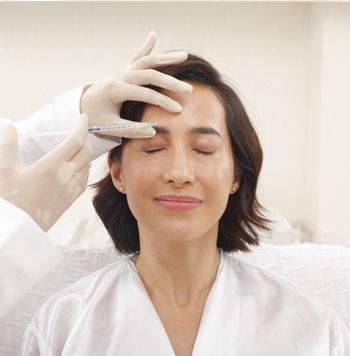Can Botox really cure your migraines?
Why it's a powerful tool in the arsenal against chronic headaches

Migraine stands as one of the most prevalent forms of headache, with a staggering annual incidence affecting approximately 15 percent of the global population. This condition not only imposes a significant personal toll but also a heavy societal burden, manifesting in reduced productivity across work, school, and home settings. Given its genetic predisposition and the vast array of contributing factors, the pathogenesis of migraine remains a topic of intense debate and study.
Chronic migraines are defined by the International Headache Society as headaches occurring on 15 or more days per month for over three months, with at least eight of those headaches having migraine features. For these individuals, the hunt for effective treatment is crucial.
Over the years, sufferers of chronic migraines have often found themselves trapped in a cycle of ineffective treatments, battling persistent pain despite various neurological medications. A new therapeutic avenue however has emerged in the form of Botulinum Toxin Type A (BoNT-A), commonly known as Botox. Initially recognized for its cosmetic applications, Botox has displayed remarkable efficacy in alleviating the debilitating effects of chronic migraines (CM). The U.S. Food and Drug Administration (FDA) approved Botox for chronic migraines in 2010, following extensive clinical trials. In the Philippines, the acceptance of Botox as a legitimate treatment for migraines has grown steadily, with local regulatory bodies endorsing its use based on global research and patient outcomes.
How Botox works in migraine management
BoNT-A is derived from the bacterium Clostridium botulinum, a Gram-positive anaerobic microorganism. The pain relief provided by Botox was once attributed solely to its muscle-relaxing properties. Further research however has revealed a more intricate mechanism. BoNT-A inhibits the release of neurochemicals and proteins within the motor and sensory systems, curtailing the exocytosis of pro-inflammatory agents, which are crucial in the pathogenesis of migraine.
Clinical benefits of Botox for migraine treatment
1. Reduction in migraine frequency. One of the most significant benefits observed in patients undergoing BoNT-A therapy is the marked decrease in the frequency of migraine attacks per month. For individuals battling chronic refractory migraines (CRM), this reduction is particularly profound, offering relief where other medications have failed.
2. Pain intensity and disability mitigation: Beyond frequency, BoNT-A has shown efficacy in lowering the intensity of migraine pain, thus diminishing the overall disability associated with these attacks. For patients with vestibular migraine (VM), this translates not only to fewer headaches but also to enhanced functional capability in daily activities.
3. Decrease in medication use and emergency visits: Chronic migraine sufferers often rely heavily on various medications, which can lead to overuse and adverse effects. Botox treatment has been documented to reduce the dependency on these medications and decrease the frequency of emergency visits, providing a more stable and manageable approach to migraine management.
4. Improved Quality of Life (QoL): The aggregate of these benefits culminates in a markedly improved quality of life for patients. The decreased severity and frequency of attacks, along with fewer side effects from medication, enable individuals to engage more actively and productively in their personal and professional lives.
The therapeutic use of BoNT-A in chronic migraine treatment heralds a new era for individuals whose lives have been disrupted by constant pain and inefficacious traditional therapies. By significantly decreasing the frequency and intensity of migraines, reducing medication dependency, and enhancing overall quality of life, Botox presents itself as a powerful tool in the arsenal against chronic migraine. For Filipino patients unresponsive to conventional neurological medications, this treatment offers a beacon of hope and a pathway to reclaiming their lives from the clutches of debilitating migraines.
As healthcare providers and researchers continue to unravel the precise mechanisms and optimal protocols for Botox therapy, the promise of enhanced migraine management becomes ever more attainable, offering renewed hope and improved health outcomes for sufferers worldwide.